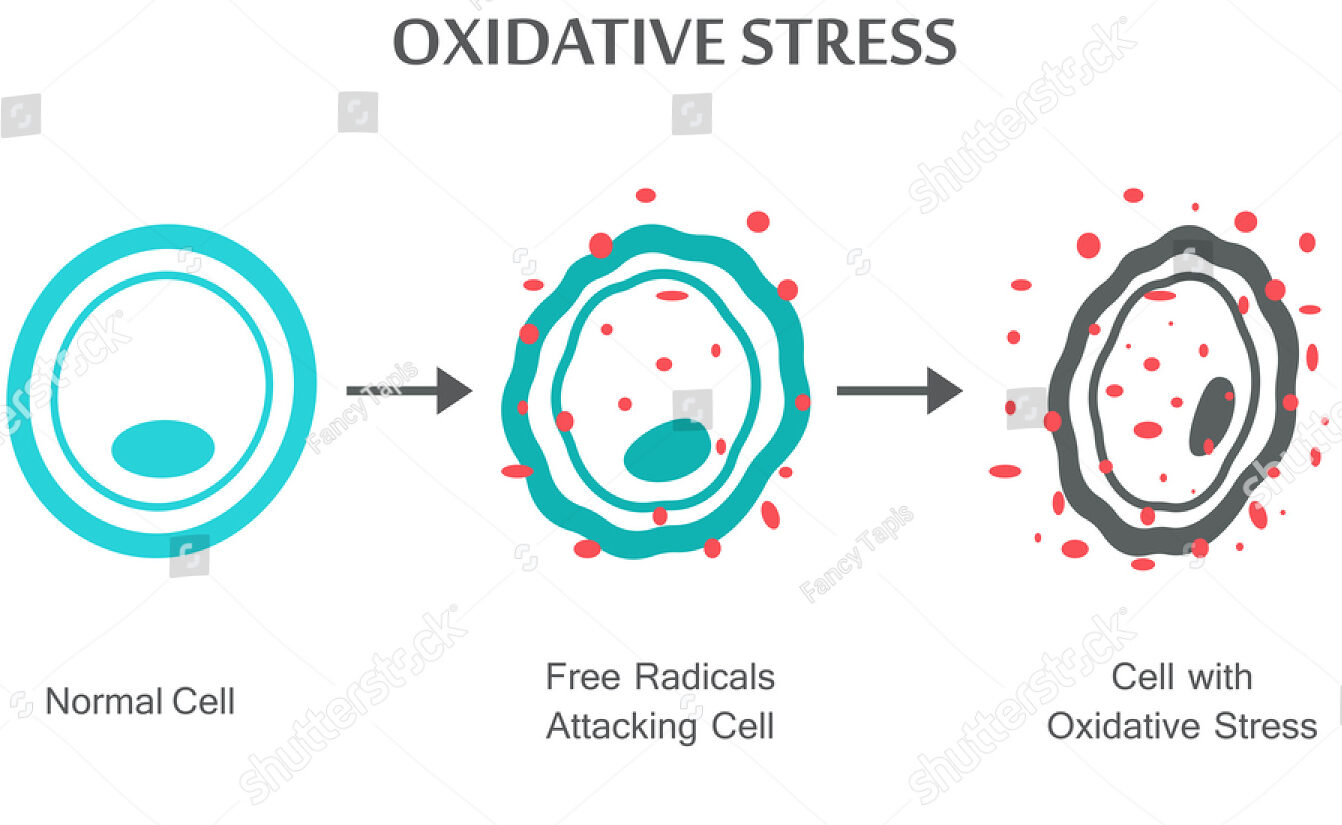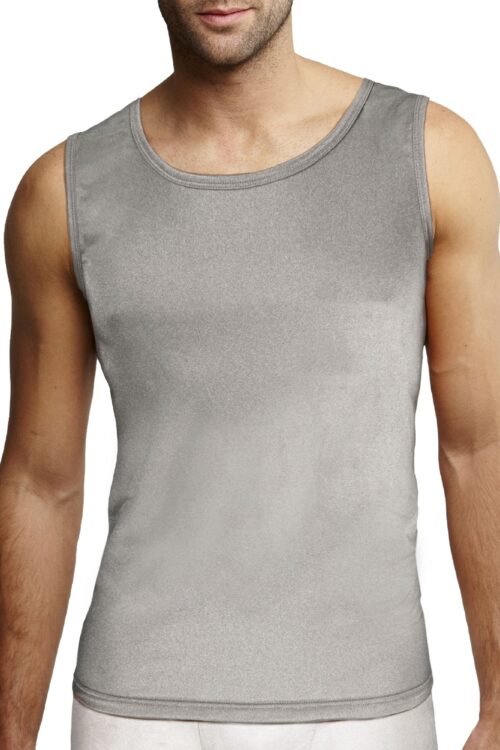Anti-radiation Clothing: Find Out How Our Garments Can Protect You
1. The use of Ayurbio reduces oxidative stress caused by external stressorss

What is oxidative stress?
Oxidative stress occurs when the amount of free radicals exceeds the body’s ability to neutralize them with antioxidants. These free radicals can damage various cellular components, such as DNA, proteins and lipids, disrupting normal cell signaling processes. This imbalance leads to cellular deterioration and can trigger a variety of diseases, as well as manifestations of aging, such as wrinkles.
In summary, oxidative stress is harmful to body tissues, caused by an excess of free radicals against antioxidants, and can generate a wide range of symptoms and diseases both in the short and long term.
Diseases caused by oxidative stress

Lungs
- Asthma
- chronic bronchitis

Kidneys
- Glomerulonephritis
- Chronic renal failure

Fertility
- Infertility
- Fetal development

Joints
- Arthritis
- Rheumatism

Eyes
- Waterfall
- Retinal diseases

Fur
- Premature aging
- chronic bronchitis

Multi-organ
- Cancer
- Autoimmune
- Diabetes
- Inflammation
- Infection

Heart
- Cardiovascular disease
- Atherosclerosis
- Hypertension
- Ischemia
- cardiomyopathy
- Heart failure

Brain
- Alzheimer’s
- Parkinson’s
- Chronic Fatigue Syndrome
- Neurodegenerative diseases
- Depression
- stroke
How Ayurbio mitigates oxidative stress
Ayurbio reduces the risk of oxidative stress by neutralizing external stimuli that trigger the generation of free radicals in the body.
Ayurbio’s advanced SILVERBLOCK™ technology demonstrates its power by blocking 99.9999% of EMF radiation, providing essential protection in a world of continuous exposure to wireless radiation (such as that from mobile phones, Wi-Fi, 4G, 5G and Bluetooth).
These garments offer a modern and effective shield for everyone, incorporating themselves naturally into the fabric of everyday life in the digital age.
2. Tested to block wireless radiation



What is wireless radiation?
Wireless radiation, or electromagnetic field (EMF), is a persistent flow generated by electrically charged entities, such as mobile devices and Wi-Fi networks. These fields move in a wave pattern at the speed of light, a phenomenon known as electromagnetic radiation.
While some electromagnetic fields are naturally occurring, such as those emitted by the human body at low intensity, technology-derived EMFs, such as those generated by cell phones and Wi-Fi networks, are not. These can trigger responses in the human body and carry health risks, both in the short and long term.
Positive effects of blocking wireless radiation
Promote
- Immune system
- Healthy aging
- Healthy skin
- Memory, learning and attention
- Cognition
- Fertility
- Testosterone production
- Gut health
By using our anti-radiation clothing, the following benefits can be achieved:
Reduce the risk of
- Cancer
- Neurodegenerative diseases, such as Alzheimer’s
- Heart disease and hypertension
- Headaches, mental confusion
- behavior problem
- Diabetes
- Skin cancer
- Sun burns
Positive effects of using Ayurbio anti-radiation clothing

Increased HRV: indicates an improvement in body stress
Heart rate variability (HRV) is recognized as a valuable measure of the activity of the autonomic nervous system (ANS), being considered one of the most effective and non-invasive ways to evaluate the body’s recovery capacity and performance. A high heart rate variability usually indicates optimal functioning of the body.
What is the autonomic nervous system (ANS)?
The autonomic nervous system (ANS) is responsible for regulating involuntary functions of the body, such as heart rate, digestion, breathing, blood pressure, sexual arousal, and pupillary response.
This system is made up of three main branches: the sympathetic nervous system, the parasympathetic nervous system, and the enteric nervous system.
The sympathetic nervous system, when activated, triggers a “fight or flight” response, causing body tension, increased alertness, and acceleration of various functions. This includes diversion of blood flow away from the gastrointestinal tract and skin, muscle contraction, increased heart rate and contraction, increased blood flow and oxygen exchange in the lungs, contraction of the urinary and intestinal sphincters, and dilation. of the pupil.
sympathetic nervous system
When the sympathetic system is activated, it triggers a “fight or flight” reaction. The body experiences tension, increases its pace and becomes more alert. It suppresses any function that is not vital to survival until the threat has been overcome (either by facing a stressful situation). Specific reactions include:
- Divert blood flow away from the gastrointestinal tract and skin.
- Muscle contraction.
- Increased heart rate and contraction.
- Blood flow and oxygen exchange increase in the lungs.
- Contraction of the urinary and intestinal sphincters.
- Pupil dilation.
parasympathetic nervous system
The parasympathetic system, on the other hand, counteracts the activity of the sympathetic system. It promotes a "rest and digest" response, inducing tranquility in the body so that it returns to its normal functioning and achieves a state of calm and recovery.
- Increased blood flow to the gastrointestinal tract.
- Lower heart rate.
- Constriction of the pupils for better accommodation of vision.
- Constriction of the bronchi in the lungs when the need for oxygen is less.
- Stimulation of sexual arousal.
- Relaxation of muscles and sphincters.
What is heart rate variability (HRV)?
Heart Rate Variability (HRV) is a measure that evaluates the differences between the beat intervals of our heart. Even though the heart rate is 60 beats per minute, it does not mean that the heart beats exactly once per second. Sometimes there may be 1.2 seconds between beats and sometimes the separation may be 0.95 seconds. VFC calculates the average variability between each heartbeat and is expressed in milliseconds.
VFC calculates the average variability between each heartbeat and is expressed in milliseconds. When the autonomic nervous system is balanced, the body responds to both sympathetic activity (which increases heart rate) and parasympathetic activity (which reduces it). This balance is responsible for fluctuations in heart rate and increases its variability.
Low VFC
If Heart Rate Variability (VFC) is lower in a resting state, this suggests that the body is experiencing stress and is not achieving adequate physical recovery. Reduced VFC can potentially lead to:
- Insomnia.
- Injuries.
- Cardiovascular problems.
- Chronic pain.
- Depression.
- Anxiety disorders.
Higher VFC
A higher Heart Rate Variability (VFC) indicates that the body is experiencing good recovery and is under less stress. A high VFC increases the likelihood of experiencing:
- Increased blood flow to the gastrointestinal tract.
- Lower heart rate.
- Constriction of the pupils for better accommodation of vision.
- Constriction of the bronchi in the lungs when the need for oxygen is less.
- Relaxation of muscles and sphincters.
- Stimulation of sexual arousal.
Because it is important
A higher Heart Rate Variability (VFC) indicates an improvement in the activity of the parasympathetic nervous system (SNP). This system regulates various bodily functions, such as heart rate, digestion, respiratory rate, and sexual arousal mechanisms. In addition, it plays an essential role in inflammatory processes and immune system responses.
A higher VFC contributes to improving:
- Possibilities of avoiding diseases.
- Performance (athletic and cognitive).
- Sleep and recovery.
- Blood pressure.
- Focus and calm.
Best sellers
Free shipping from 29€.
Deliveries within 24/48 working hours.
Secure delivery guarantee.





